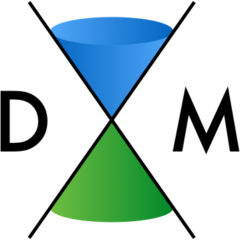In general, the symmetry of a superconductor can be characterized by studying the anomalous Green’s function:
![]()
where ![]() annihilates an electron with indices labeling spin,
annihilates an electron with indices labeling spin, ![]() , position,
, position, ![]() , time,
, time, ![]() , and orbital/band degrees of freedom,
, and orbital/band degrees of freedom, ![]() , and
, and ![]() is the time-ordering operator. Using the fermionic properties of electrons it is straightforward to show that:
is the time-ordering operator. Using the fermionic properties of electrons it is straightforward to show that: ![]() . This relation tells us that the wavefunction describing the Cooper pairs,
. This relation tells us that the wavefunction describing the Cooper pairs, ![]() , must obey
, must obey ![]() where:
where: ![]() acts on spin (
acts on spin (![]() );
); ![]() is the spatial parity operator (
is the spatial parity operator (![]() );
); ![]() interchanges orbital degrees of freedom (
interchanges orbital degrees of freedom (![]() ); and
); and ![]() reverses the time coordinates (
reverses the time coordinates (![]() ). Using this property of
). Using this property of ![]() together with the fact that all four transformations square to the identity, the possible symmetries of the Cooper pair wavefunction may be divided into 8 different classes based on how they transform under
together with the fact that all four transformations square to the identity, the possible symmetries of the Cooper pair wavefunction may be divided into 8 different classes based on how they transform under ![]() ,
, ![]() ,
, ![]() , and
, and ![]() :
:

While no examples of bulk odd-frequency superconductors have yet been identified, there are a growing number of proposals for engineering these exotic amplitudes in heterostructures and driven systems, magnetic states and systems with Majorana modes.
Pair Symmetry Conversion in Driven Multiband Superconductors
By subjecting a multiband superconductor to a time-dependent drive, even-frequency pair amplitudes can be converted to odd-frequency pair amplitudes and vice versa. In the movie below we evaluate, as a function of time, both the even-frequency and odd-frequency pairing amplitudes of a multiband superconductor driven by a time-periodic chemical potential. At generic times during the period, contributions to the odd-frequency and even-frequency pair amplitudes are non-zero. The corrections to the odd-frequency amplitudes are largest exactly when the drive vanishes and smallest exactly when the drive reaches its maximum amplitude; the corrections to the even-ω amplitudes behave in the opposite manner.
Key papers:
- Review article:
Odd-frequency superconductivity
Jacob Linder, Alexander V. Balatsky
arXiv:1709.03986 - General conditions for proximity-induced odd-frequency superconductivity in two-dimensional electronic systems
Christopher Triola, Driss M. Badiane, Alexander V. Balatsky, E. Rossi
Phys. Rev. Lett. 116, 257001 (2016)
arXiv:1512.03068 - Proximity-induced unconventional superconductivity in topological insulators
Annica M. Black-Schaffer, Alexander V. Balatsky
Phys. Rev. B 87, 220506(R) (2013)
arXiv:1305.4142
